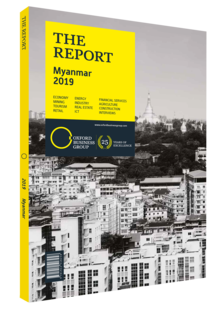Parag Khanna, Founder and Managing Partner, FutureMap : Interview

Interview : Parag Khanna
How will the geopolitical rise of larger economies such as China and India shape the development of smaller Asian economies?
PARAG KHANNA: India’s economy is only one-fifth the size of China’s, but it is primed to experience at least one or two decades of rapid and continuous growth. However, the Association of South-East Asian Nations has a larger GDP than India, and it receives more foreign direct investment than China, so it is also a crucial pillar of both the global and Asian economies. Japan should also not be forgotten, as it has been the largest lender and investor across Asia, and continues to play a major role. We must remember that the norm in Asia is multipolarity, not hegemony. Small economies that have large trade deficits and outstanding debt to China will continue to, but they will gain new infrastructural foundations that allow them to grow, rather than stagnate. In the medium term this may improve sovereign ratings, and possibly attract more diversified investment and trade partners. Therefore, as they continue to develop, China’s dominance over these countries’ economies will become increasingly diluted.
For what reasons do you foresee regional collaboration among Asian nations, as opposed to a future driven by individual Asian powers?
KHANNA: There is no region in the world more economically and culturally diverse than Asia. However, the structure that prevailed before the 16th century and the rise of colonialism is returning: all of Asia’s sub-regions are deepening their trade, investment and structural ties with one another. Trade within this greater Asian region represents a growing 60% of total trade. Though China’s economy is the largest, it cannot completely dominate the rest of Asia, which is multipolar in terms of both public-private partnerships and geopolitics. So there are core Asian powers, but there is also great fluidity across the region.
How will “Asianisation” affect the international trade environment and the rules-based order established in the 20th century?
KHANNA: Over the past half century, the World Trade Organisation’s General Agreement on Tariffs and Trade has been crucial to reducing global tariffs. Chinese, Japanese and South Korean efforts, and the Regional Comprehensive Economic Partnership are good examples of this. Most of the world’s trade agreements being negotiated today, however, are between Asian countries.
Given the commonalities within Asian economies, there is no doubt that intra-Asian trade liberalisation and expansion will continue. Nevertheless, Asian nations are perhaps wise to proceed incrementally, so as to not shock core domestic sectors and the labour force in the way that globalisation has shocked Western economies. By proceeding cautiously, Asian nations can maintain the current high degrees of public support for globalisation.
What Asian countries offer the best examples of productive education and innovation ecosystems, and is it possible to replicate these models?
KHANNA: The sequence by which Asia has produced innovation ecosystems closely matches the expansion of national wealth. From the 1960s onwards, Japan was Asia’s leading centre of economy and innovation, followed by South Korea and Taiwan, then by China – particularly from Shenzhen to Guangzhou, where China’s first special economic zones were founded in the late 1970s. Each of these countries has a competitive advantage in areas such as advanced manufacturing and robotics, semiconductors and microchips, solar power, data analytics and a multitude of other areas. Singapore, Hong Kong and Taiwan have also been important investors and drivers of this innovation across Asia, and each have innovative ecosystems and world-renowned education systems of their own.
You have reached the limit of premium articles you can view for free.
Choose from the options below to purchase print or digital editions of our Reports. You can also purchase a website subscription giving you unlimited access to all of our Reports online for 12 months.
If you have already purchased this Report or have a website subscription, please login to continue.

